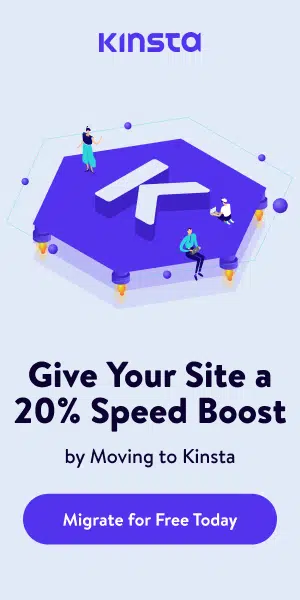If you’re a small business owner trying to increase your online visibility, you’ve probably heard a lot about SEO. But are you using it effectively?
A well-crafted SEO content strategy, as part of a broader content marketing strategy, can help you rank higher on search engines, drive organic traffic, and ultimately grow your business.
This practical guide is tailored specifically for small business owners, breaking down the key elements of an effective SEO strategy, from keyword research to content creation, link building, and beyond.
By the end of this post, you’ll have the tools to create a winning SEO content strategy that supports your goals without needing a massive budget or technical expertise.

What is an SEO Content Strategy?
An SEO content strategy is a plan to create and manage search-engine-optimized content that supports your business objectives through effective search engine optimization.
This doesn’t just mean stuffing relevant keywords into blogs—it’s about building high-quality, search-focused content that aligns with user intent.
Looking for an experienced Wordpress Development company?
The ultimate goal of an SEO content strategy is to rank higher on search engine results pages (SERPs), drive consistent organic traffic to your site, and convert visitors into loyal customers. When executed effectively, it can save you time and boost ROI in the long term.

Why Your Small Business Needs One
Small business owners have limited time and budgets, so why prioritize an SEO content strategy? Here’s why it’s essential:
- Cost-Effective Marketing: SEO-driven content doesn’t rely on expensive ad campaigns but delivers long-term results.
- Increase Organic Traffic: Rank higher on Google search results and attract targeted traffic based on relevant queries.
- Higher Engagement: By delivering quality content aligned with search intent, your audience is more likely to stay on your site and take action.
- Build Credibility: A consistent presence on search results increases your domain authority and showcases your expertise in your field.
Writing SEO content that aligns with your audience's search intent is crucial for achieving these benefits.
Now that we’ve established the “why,” let’s focus on the “how.”

Building an Effective SEO Content Strategy
Step 1. Conduct Proper Keyword Research
Keyword research and planning are the cornerstones of an effective SEO content strategy. This step involves identifying the specific keywords and phrases your target audience uses when searching for information related to your business.
By conducting research with the keyword's search intent in mind, you can create content that resonates with your audience and improves your search engine rankings.
To get started, leverage tools like Google Keyword Planner, Ahrefs, or SEMrush. These tools help you uncover keywords with high search volume, low competition, and high conversion potential.
Additionally, analyzing your competitors’ websites can reveal content gaps that you can fill with your own high-quality content.
When planning your keyword strategy, consider the following factors:
- Relevance: Ensure the keyword is directly related to your business and the needs of your target audience. Ensure you're using competitive keywords to create relevant content.
- Search Volume: Look for keywords that a significant number of people are searching for. This leads to more organic traffic.
- Competition: Aim for keywords with lower competition to increase your chances of ranking higher. With then in mind, your content SEO strategy also needs to include some of those keywords that are harder to rank for. Consider using long tail keywords for lower competition and higher competitive keywords for an SEO driven content strategy.
- Conversion Rate: Focus on keywords that are likely to lead to sales or leads.
By carefully selecting keywords that are relevant, high-traffic, and low-competition, you lay a strong foundation for your SEO content strategy.
This targeted approach ensures that your content attracts the right audience and drives meaningful engagement.
Step 2. Align Content with Search Intent
Aligning your content with search intent is crucial for improving your search engine rankings and driving organic traffic to your website. Search intent refers to the underlying reason behind a user’s search query.
By understanding the search intent behind a keyword, you can create content that meets the user’s needs and provides genuine value.
There are four main types of search intent:
- Informational: The user is seeking information on a specific topic (e.g., “how to start SEO for small business”).
- Navigational: The user is looking for a specific website or webpage (e.g., “Google Search Console login”).
- Transactional: The user intends to make a purchase or complete a transaction (e.g., “buy custom candles online”).
- Commercial: The user is researching products or services to buy (e.g., “best laptops for graphic design”).
To align your content with search intent, consider the following:
- Keyword Research: Conduct thorough keyword research to identify keywords with high search volume and low competition that match the search intent.
- Content Type: Create content that matches the search intent. For example, if the search intent is informational, develop a detailed blog post or article that provides valuable insights.
- Content Format: Use a format that is easy to consume and provides value to the user. For instance, if the search intent is transactional, create a landing page with a clear call-to-action.
By aligning your content with search intent, you can improve your search engine rankings, drive organic traffic, and increase conversions.
This approach ensures that your content not only attracts visitors but also meets their needs, leading to higher engagement and satisfaction.
Step 3. Optimize Content for Search Engines
SEO isn’t just about writing; it’s about optimizing your content through effective search engine optimization techniques to help search engines understand its relevance.
- Use On-Page SEO Best Practices:
- Include the target keyword in your title tag, headers, and image alt text.
- Write concise, compelling meta descriptions.
- Use short, keyword-rich URLs.
- Internal Linking: Add links to other relevant pages on your website to improve user navigation and distribute page authority.
- Page Optimization: Improve loading speed, ensure mobile responsiveness, and structure content for readability (e.g., using bullet points or numbered lists).
Step 4. Create and Distribute High-Quality Content
The backbone of a successful SEO content strategy is consistently creating valuable, engaging content as part of a comprehensive content marketing strategy.
- Focus on Content Marketing: Address your audience’s pain points through blog posts, landing pages, and more.
- Improve Existing Content: Update outdated articles and optimize your most-viewed posts to maintain their search engine rankings.
- Use Analytics for Refinement: Google Analytics can track engagement, helping you identify what type of content performs best.
Pro Tip: Share your content across various platforms like newsletters and social media to distribute it effectively.
Step 5. Build High-Quality Links
Link building is one of the most impactful off-page SEO strategies for increasing domain authority and improving search rankings.
- Broken Link Building: Use tools like Ahrefs to find broken links on other sites and offer your content as a replacement.
- Competitor Analysis: Identify where competitors get their backlinks and replicate those strategies.
- Leverage Relationships: Partner with industry influencers, bloggers, and niche websites for guest blogging or quotes to boost backlinks.
High-quality backlinks signal to search engines that your site is credible and valuable, ultimately helping you rank higher.
Step 6. Analyze and Improve
Your SEO content strategy isn’t a one-and-done deal; regular monitoring and adaptations are key.
- Measure Key Metrics: Use Google Analytics and Google Search Console to measure organic traffic, bounce rates, and conversions.
- Identify Gaps: Analyze which pieces of content drive high user engagement and which ones underperform.
- Make Improvements: Use tools like Surfer and Ahrefs to update outdated content and maintain its ranking power.

Take Control of Your SEO Strategy
Creating a successful SEO content strategy may feel overwhelming, but it’s essential for staying competitive in today’s digital economy. Focus on building quality content that aligns with search intent, use reliable tools to track progress, and constantly refine your approach based on data insights.
Looking for expert guidance?
At Priceless Consulting, we’ve developed effective strategies for small businesses across industries, blending technical optimization with creativity. Contact us today for support with web development and SEO services tailored to your goals.
Want to help other small business owners grow? Share this post and spread the knowledge!

Learn More About SEO
Expanding your knowledge about SEO is crucial to staying competitive in the digital space. Below is a list of credible resources to help you master SEO concepts and strategies:
- Google Search Central – Official resources from Google to understand how their search engine works and how to optimize your site for success.
- Moz Beginner's Guide to SEO – A comprehensive guide covering all the essential aspects of SEO, perfect for beginners.
- Ahrefs Blog – Advanced tips, strategies, and case studies for improving your SEO performance.
- HubSpot’s SEO Resources – Guides, checklists, and tools designed to support marketers with their SEO efforts.
- Search Engine Journal – Stay updated with the latest industry news, trends, and SEO strategies from experts.
- Moz Blog – Comprehensive articles, beginner's guides, and best practices to help you master SEO fundamentals.
- Neil Patel Blog – Actionable insights, tutorials, and tools for improving SEO and digital marketing strategies.
- Backlinko – Expert advice, in-depth case studies, and proven techniques for boosting your SEO rankings.
- Semrush Blog – A resourceful platform for tips, trends, and tutorials to enhance your digital marketing and SEO skills.
These resources cover a range of topics from beginner basics to advanced strategies, ensuring you gain a well-rounded understanding of SEO abilities to leverage for your business.







